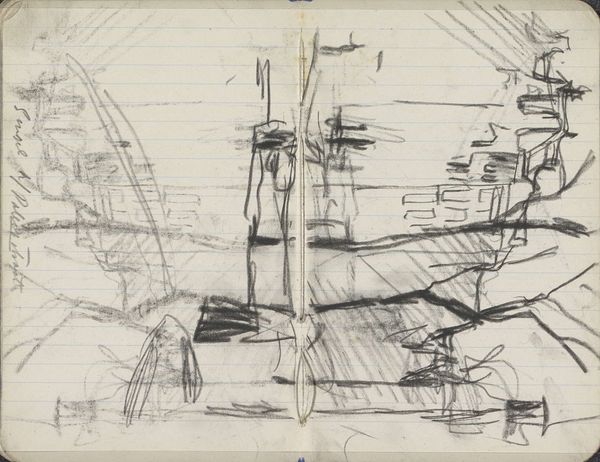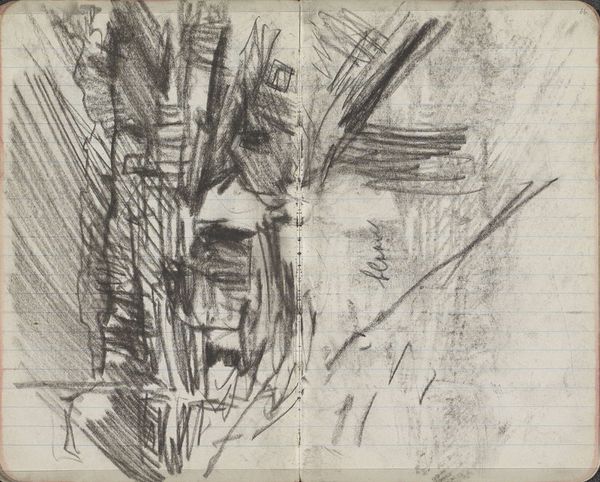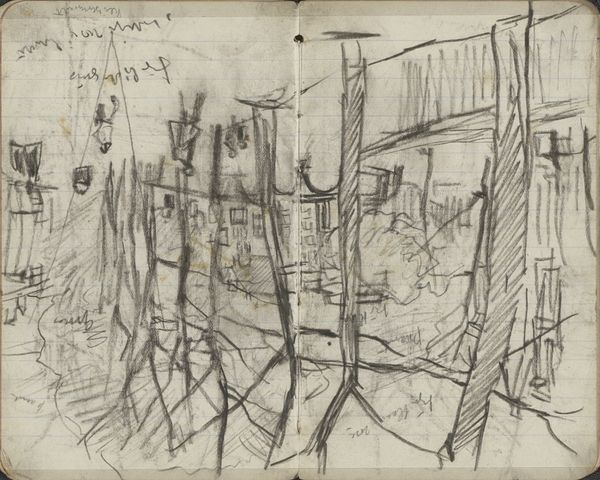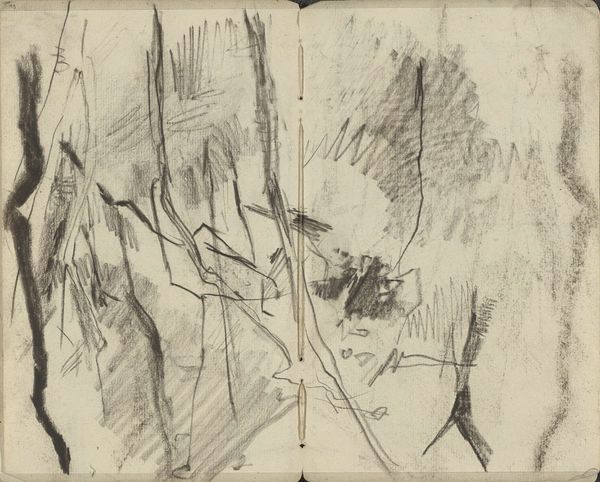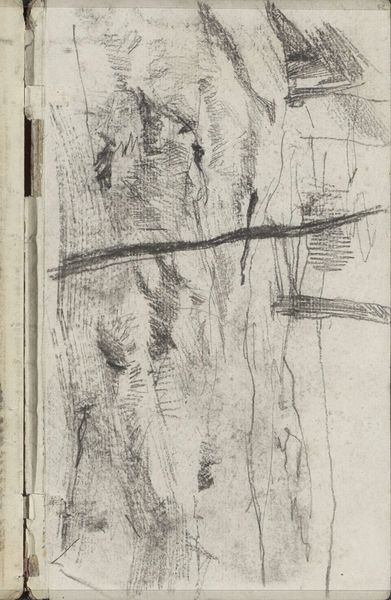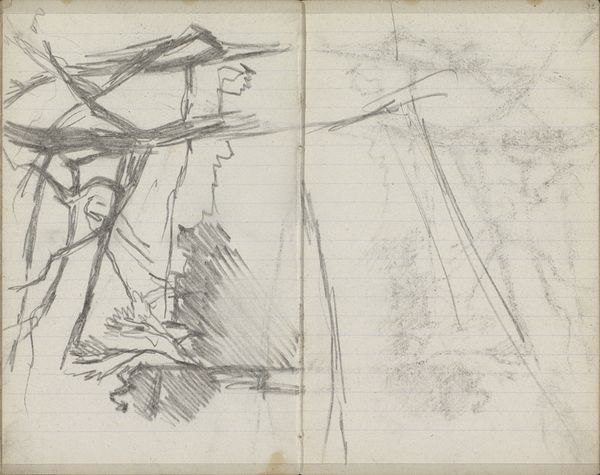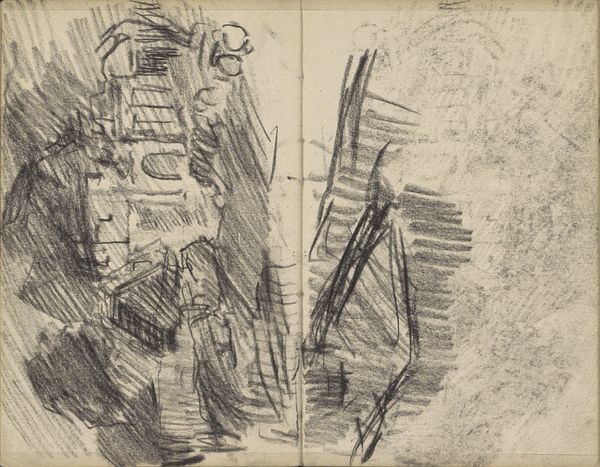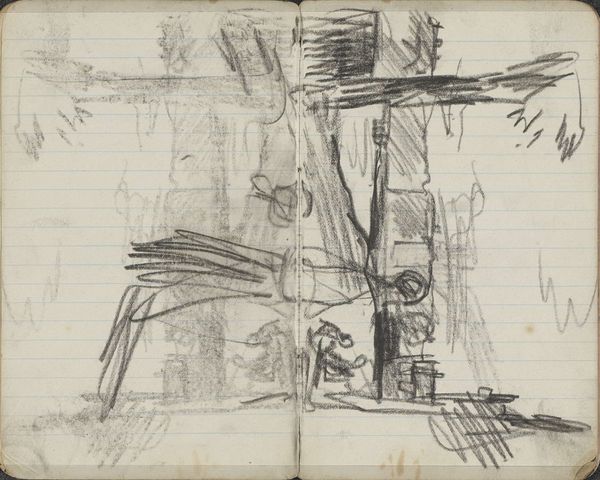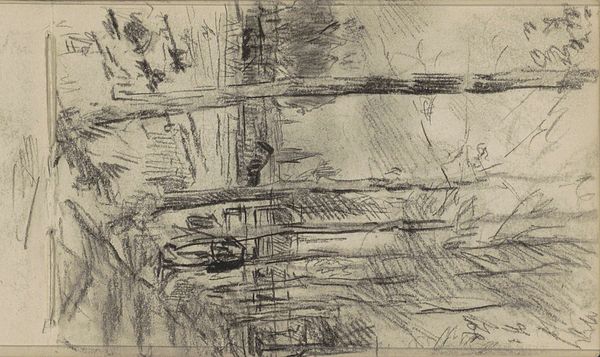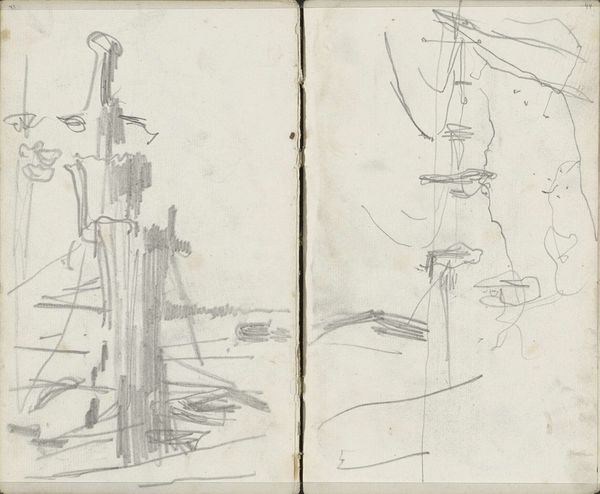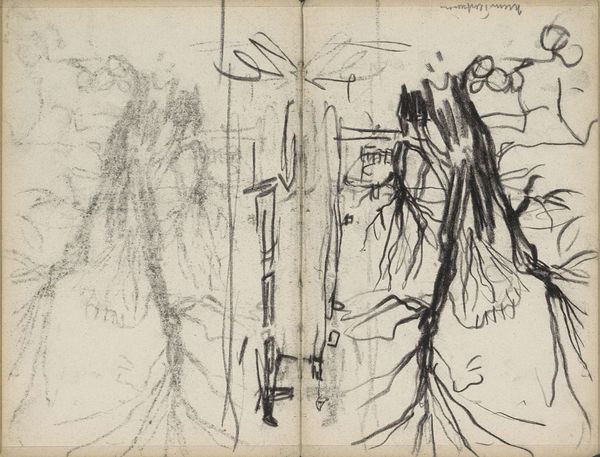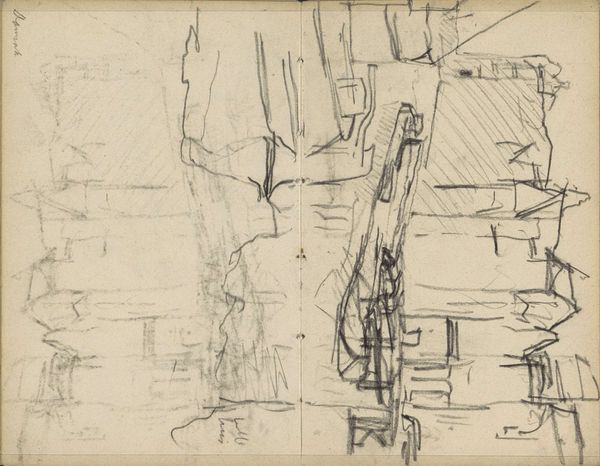
Copyright: Rijks Museum: Open Domain
Editor: This is George Hendrik Breitner's 1893 graphite drawing, "Trampaarden op de Dam te Amsterdam," or "Horse-Drawn Trams on Dam Square in Amsterdam". It's striking because of the sketch-like quality, almost like a quick snapshot. What stands out to you about this piece? Curator: What fascinates me is how Breitner captures the energy of urban life in Amsterdam at the end of the 19th century. Consider the context: The city was rapidly industrializing, experiencing an influx of people, and transforming its infrastructure. Do you think this drawing serves as a sort of document? Editor: Possibly, although it seems more like an impression than a perfect record. The frenetic lines suggest movement but lack crisp details. Is that typical of how Breitner engaged with the changing urban landscape? Curator: Precisely. He was drawn to the dynamic pulse of modern life. Museums and galleries played a crucial role then, as now, in legitimizing certain viewpoints. Breitner was interested in depicting everyday scenes, not in glorifying traditional aristocratic portraiture or pastoral scenes favored by the academy. How does that align with your understanding of Impressionism? Editor: It makes sense. The style suits his subject; fleeting moments of everyday life captured on the page. So you're saying this work, beyond just depicting horse trams, subtly challenged what was considered "worthy" of art? Curator: Exactly. His focus on the working class, the bustling city, and ordinary moments shifted artistic focus. This drawing participates in the politics of imagery, suggesting new values in Dutch society. What are your thoughts now? Editor: Seeing it that way gives me a whole new appreciation for Breitner. It's more than just a quick sketch; it's a deliberate commentary on modern life and what art could and should represent. Curator: And seeing it as a product of socio-political forces offers a glimpse into the complex relationship between art, its subjects, and the audiences that would one day view it within museum walls.
Comments
No comments
Be the first to comment and join the conversation on the ultimate creative platform.
